Pasta con le sarde (Sicilian pasta with sardines) is a delicious fusion of ingredients from Arab and Mediterranean cultures and a reminder of Sicily’s fascinating history. Full of the flavors of Sicily, this traditional Sicilian dish is typically eaten on St. Joseph’s Day (March 19th) and Good Friday.
Called ‘pasta con le sarde’ in Italian and ‘pasta ch’i sardi’ or ‘pasta c’a munnizza’ in Sicilian dialect, pasta with sardines and wild fennel is one of the most well-known Sicilian pasta recipes.
In fact, it is recognized as a traditional Italian food product in an Italian government scheme to promote traditional foods called PAT (Prodotto agroalimentare tradizionale).
Pasta with sardines and wild fennel is eaten all over Sicily
History
Although traditionally considered to be from Palermo, pasta con le sarde is eaten all over Sicily. In some parts of the island, they add tomatoes or almonds. In other parts, they don’t use saffron or tomatoes.
But, in general, the recipe calls for fresh sardines, anchovies, sultanas/raisins, pine nuts, saffron and wild fennel.
Sicilian pasta con le sarde has ancient origins. Food legends tell us that it was prepared for the first time by the Arab cook of Eufemio da Messina. Da Messina was the ex-commander of the Byzantine fleet.
But, he had been accused of kidnapping and marrying a nun by the Byzantine emperor. Da Messina fled to Africa, where he joined forces with the Saracens and then, returned to Sicily to seek revenge for charges he considered false.
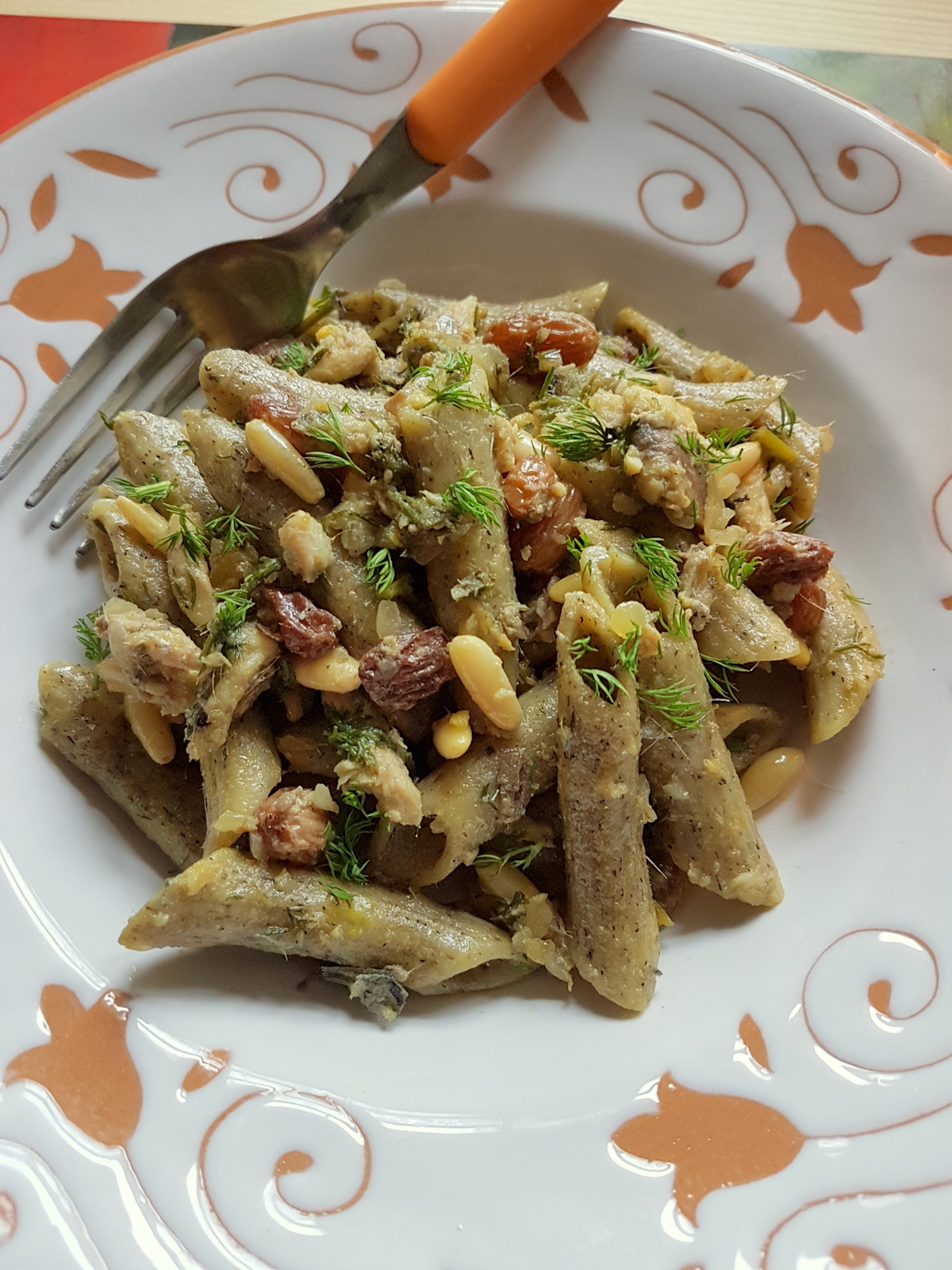
On June 14th 827, Da Messina sailed to the southern coast of Sicily. After a 3 day storm he arrived in Capo Granitola bay. The Saracen sailors were exhausted and seriously hungry and needed a meal before entering into battle.
The ship’s cook, whose name was never recorded, had to feed those hungry sailors. But, there weren’t many ingredients to choose from. So, he had to be inventive and make a dish with what was available to him.
Saffron, raisins, pine nuts, wild fennel and sardines fished from the Sicilian sea were what food history tells us he used to create this dish. Sicilian pasta with sardines and wild fennel is still made almost the same way hundreds of years later!
Main Ingredients
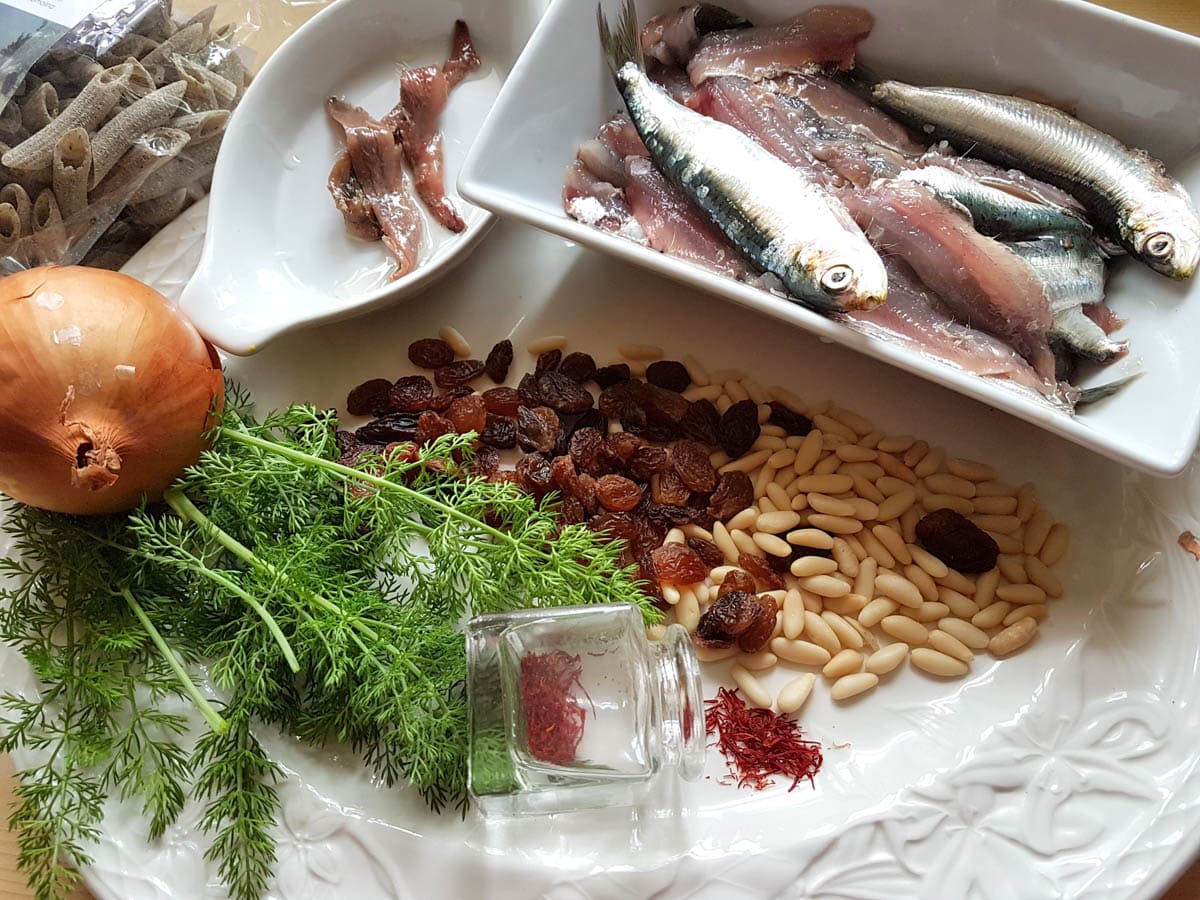
Wild fennel
Wild fennel grows all over Sicily. You can find it in the countryside, in ditches, along roadsides and even abandoned gardens!
The peak season is during March. But, it’s possible to plant a bit in a pot and as long as you give it a little water you will be able to have wild fennel for months.
However, spring is the traditional season to make Sicilian pasta with sardines! In fact, this is a very traditional dish on the feast of St Joseph (March 19th) and Good Friday.
Instead of wild fennel, you can use normal fennel tops from a fennel bulb. The fennel flavor isn’t as strong, but the dish will still be delicious. For more of a ‘fennel’ taste add some fennel seeds!
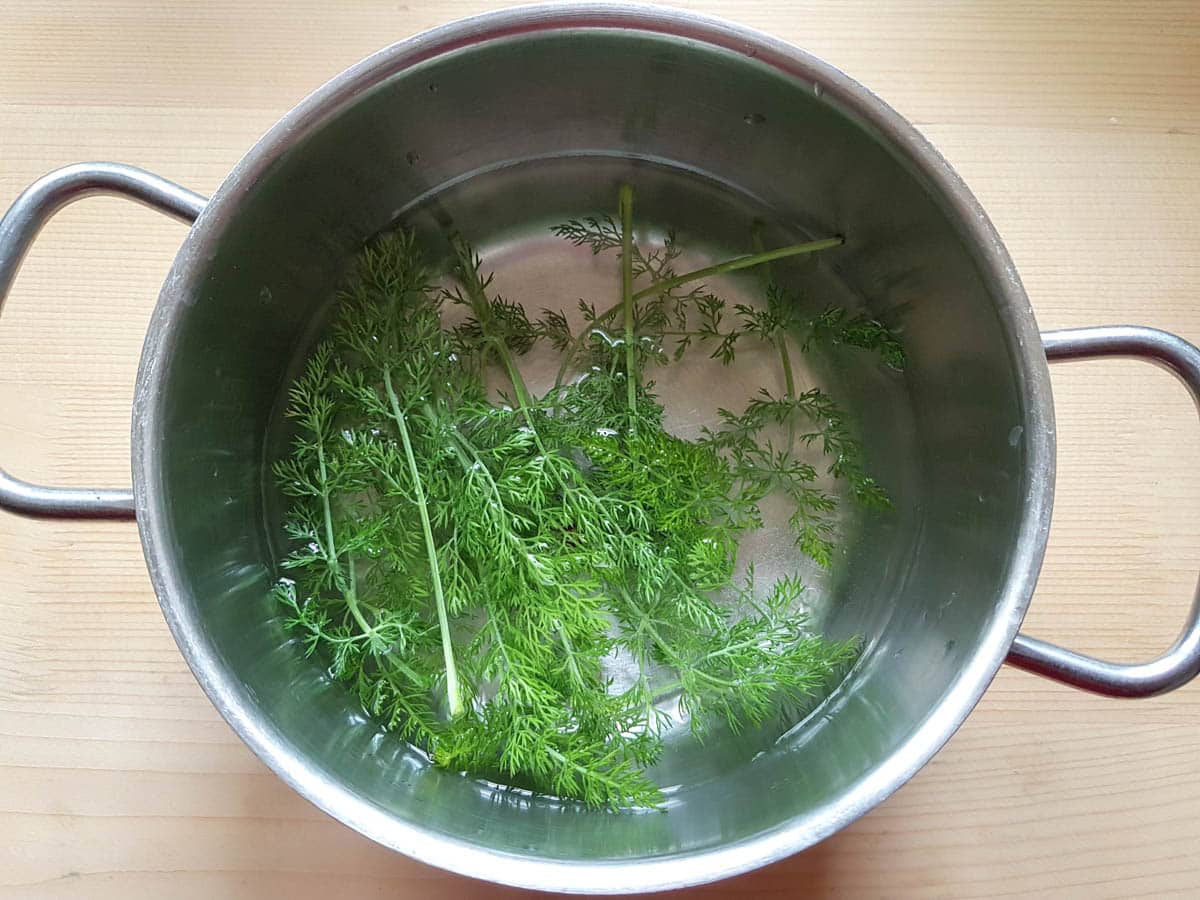
The sardines
Sardines used to be considered a fish with little value. In fact, they were used mainly as bait to catch bigger fish. They were also eaten mostly by the poorer people. In Sicily, there are a number of popular sardine based dishes such as ‘sarde al beccafico’, which I love.
This dish is made by stuffing 2 flattened and filleted sardines and then baking them. Today, like Sicilian pasta with sardines, sarde al beccafico is considered a highlight of Sicilian cuisine.
Despite their past reputation as poor quality food, sardines are actually very good for you. They are rich in vitamin D, vitamin B12, calcium selenium and proteins, as well as Omega 3. Obviously, fresh fish are best for this recipe but you can also use canned sardine fillets.
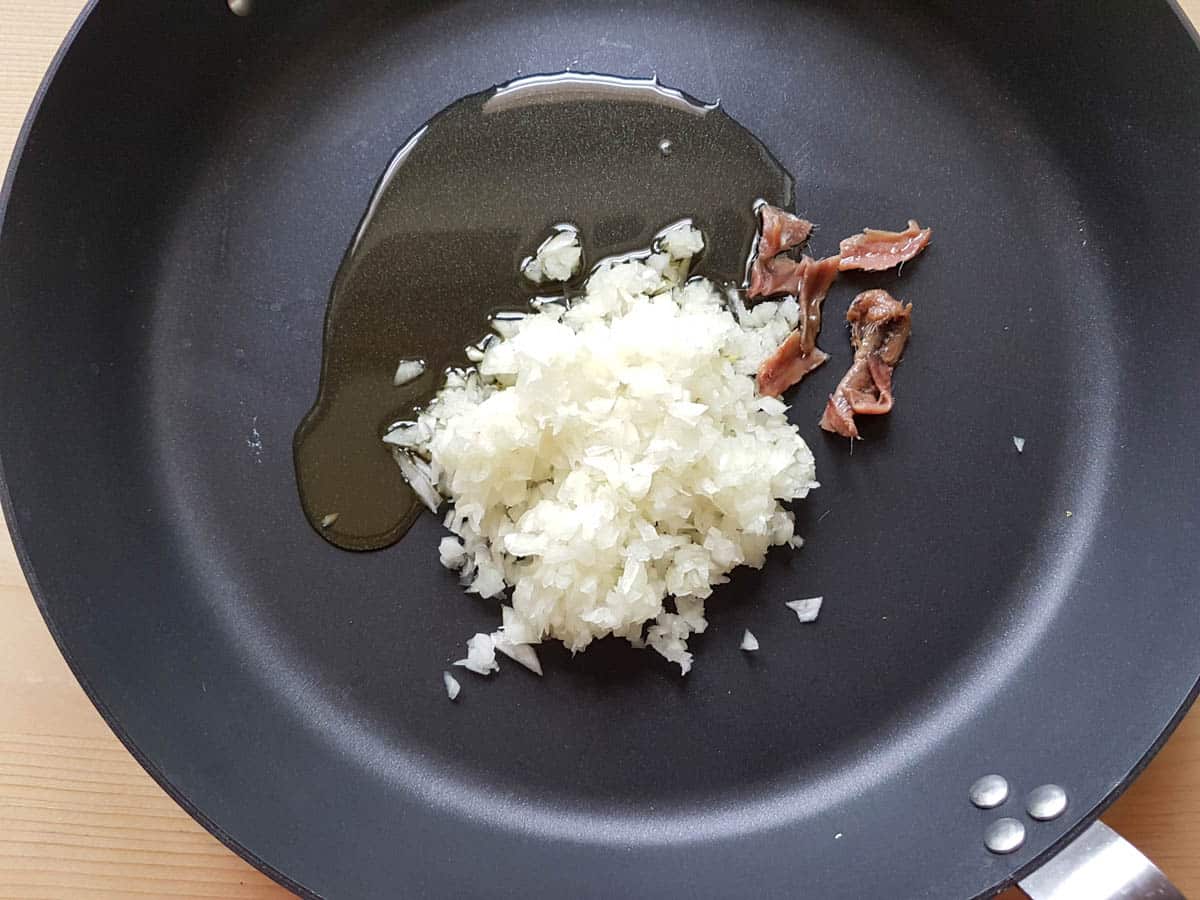
The pasta
The traditional pasta for this recipe is long pasta such as bucatini or spaghetti. However, many people use penne or other pasta tubes. I used organic penne actually made with a heritage grain called Russello and wild fennel!
This pasta was made in Sicily and sent to me by a company called US Italian Foods, based in New York. They sell this and other types of ancient grain organic pasta from Sicily in US and Europe.
I know some people (not normally Italians) think pasta isn’t very healthy! But, there is pasta and there is PASTA.
Mass produced pasta may not be healthy, especially if produced with flour made from GMO wheat that has been sprayed with poisons like the herbicide Glysophate!
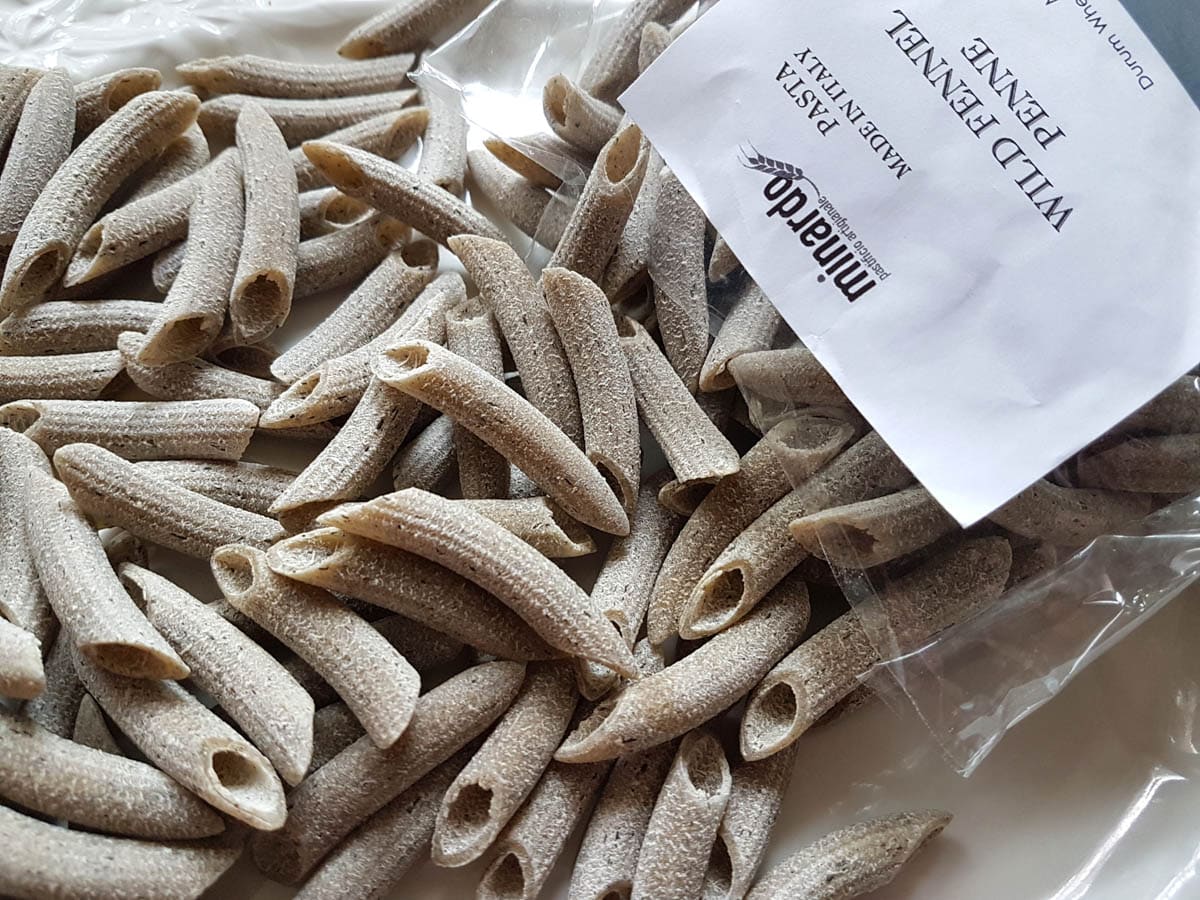
In fact, although the pasta on your supermarket shelves may be ‘made in Italy’, the wheat used is not always Italian! So, even though Glysophate is banned in Europe, some Italian pasta and a lot of foreign made pasta may contain it!
Organic Sicilian pasta.
The good news is that there is lots of healthy pasta out there! Organic pasta made in Sicily with ancient grains is definitely good for you! In fact, it is rich in protein, omega-3 fatty acids and antioxidants.
Ancient grains, also called heritage grains, are types of wheat which haven’t been altered to produce higher yields. These grains lost popularity in the past as they have a lower yield and thus production costs are higher.
Luckily, pasta and other wheat products made with heritage grains are becoming more and more popular again. This is because apart from being healthier, they are better tolerated by people who have problems with gluten!
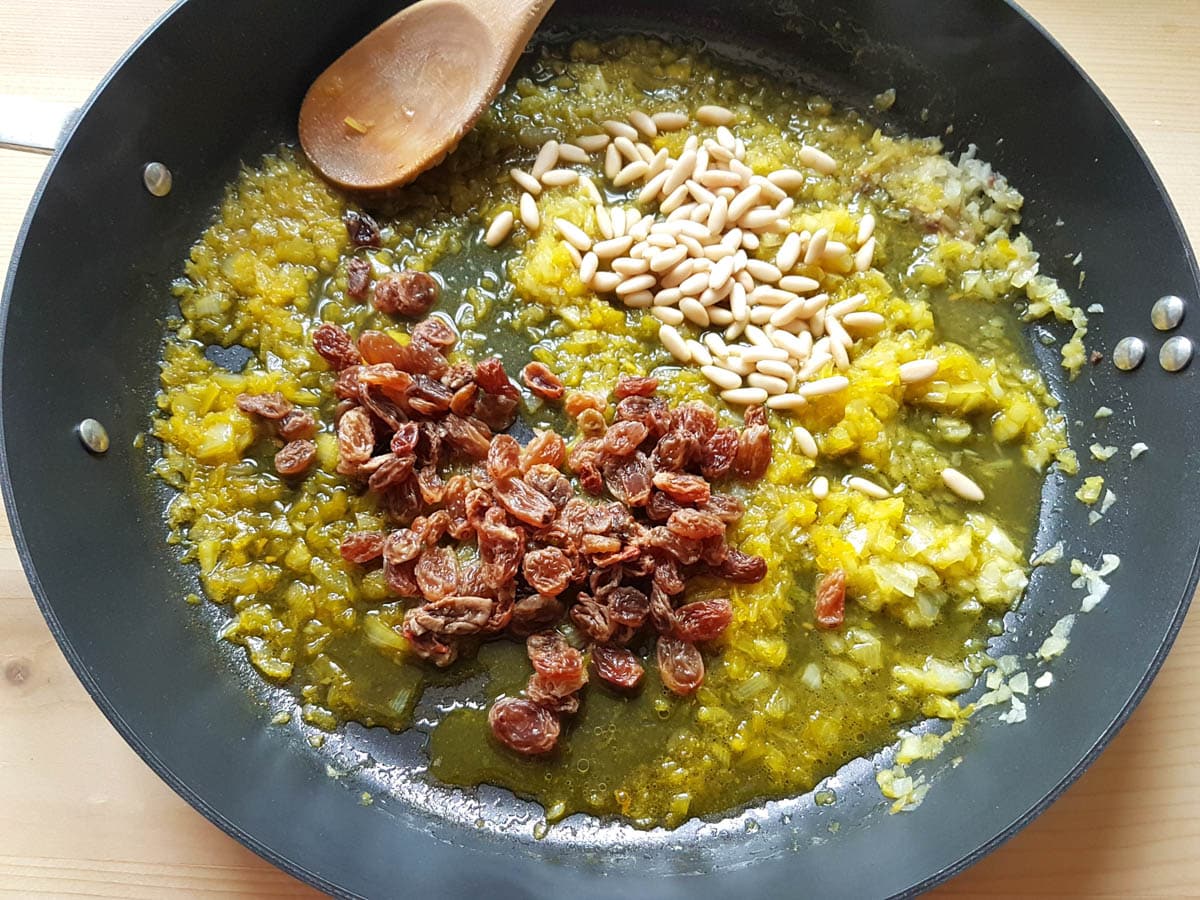
Step by step instructions.
1) Soak the raisins in a bowl of warm water. In a separate small cup, soak the saffron threads or powder with 3-4 tablespoons of warm water. If using fresh sardines, clean them per the instructions in the recipe card below. Peel and chop the onion.
2) Remove the lower part of the wild fennel stalks and cook in boiling salted water for 10 minutes. Save the water and drain the fennel and put it into a bowl of iced water to preserve the color. After the fennel has cooled, chop it.
3) In a large skillet, sauté the finely chopped onion and anchovy fillets in extra-virgin olive oil over medium heat until the onions turn translucent and the anchovies have melted.
4) Bring a large pot of water to a boil for the pasta. Add the reserved fennel water and once it starts to boil, add salt. Cook the pasta in boiling water until al dente, as per the package instructions.
5) Meanwhile, drain the soaked raisins and add them to the pan, along with the pine nuts, saffron, and chopped fennel. Continue to cook for 5 more minutes.
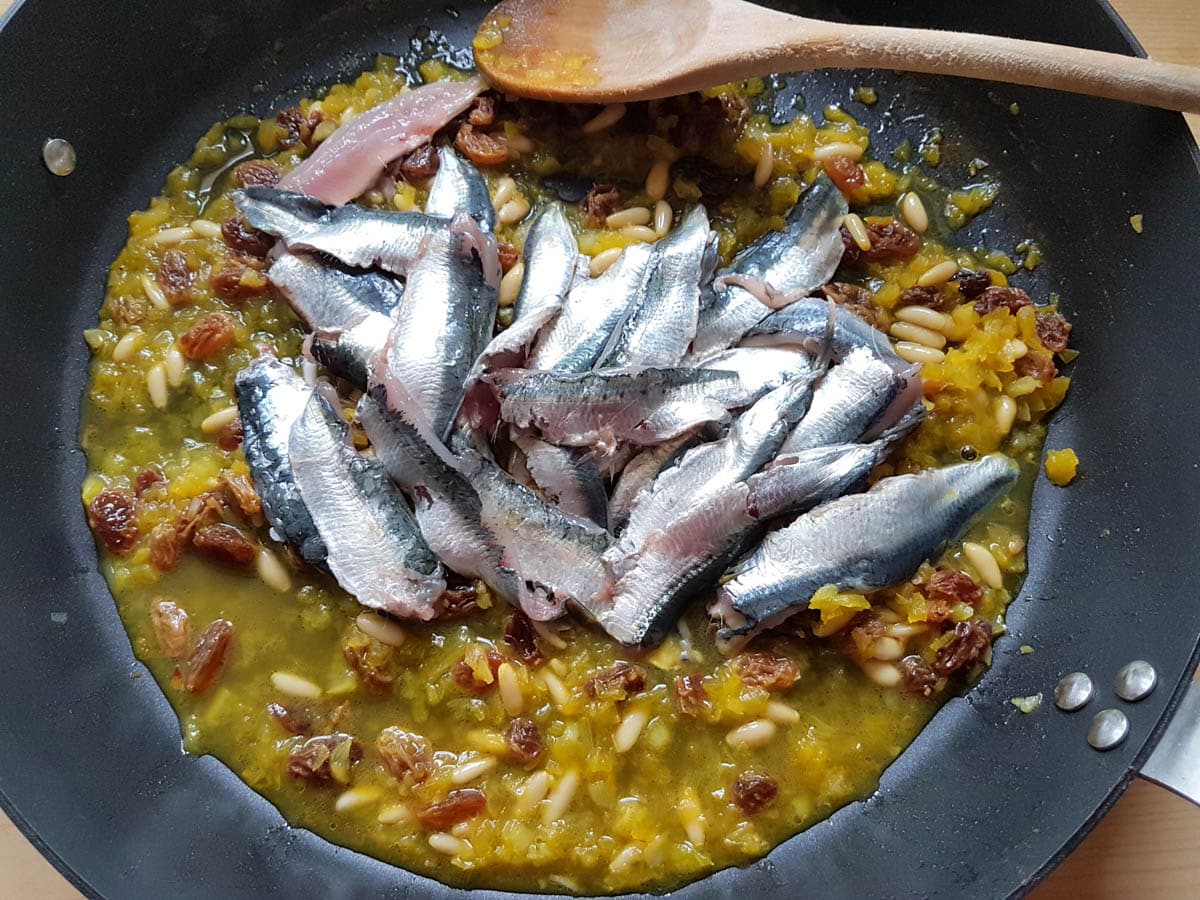
6) Add the sardine fillets to the pan, stirring regularly with a wooden spoon for 3-4 minutes until the fish starts to flake. Season to taste with salt and black pepper and drizzle with a little olive oil.
7) Mix in the cooked pasta with the sardine sauce and serve immediately sprinkled with chopped wild fennel. Optionally, you can add some lemon zest or garnish with toasted homemade breadcrumbs.
Storage and Leftovers
If you have leftover sardine pasta, you can store it in an airtight container in the refrigerator for up to 2 days. When you’re ready to eat, reheat it covered in the microwave until hot throughout.
FAQs
Absolutely! If fresh sardines aren’t available, canned sardines are a great substitute. They still taste great in the dish and make it more convenient to prepare.
If you can’t get hold of wild fennel, use the tops of regular fennel. While the flavor might not be as pronounced, your pasta will still taste fantastic. To enhance the ‘fennel’ taste, add a sprinkle of fennel seeds!
Absolutely! While the traditional pasta for this dish is either bucatini or spaghetti, many people use penne or other types of pasta tubes. Choose whichever type of pasta you prefer or have on hand.
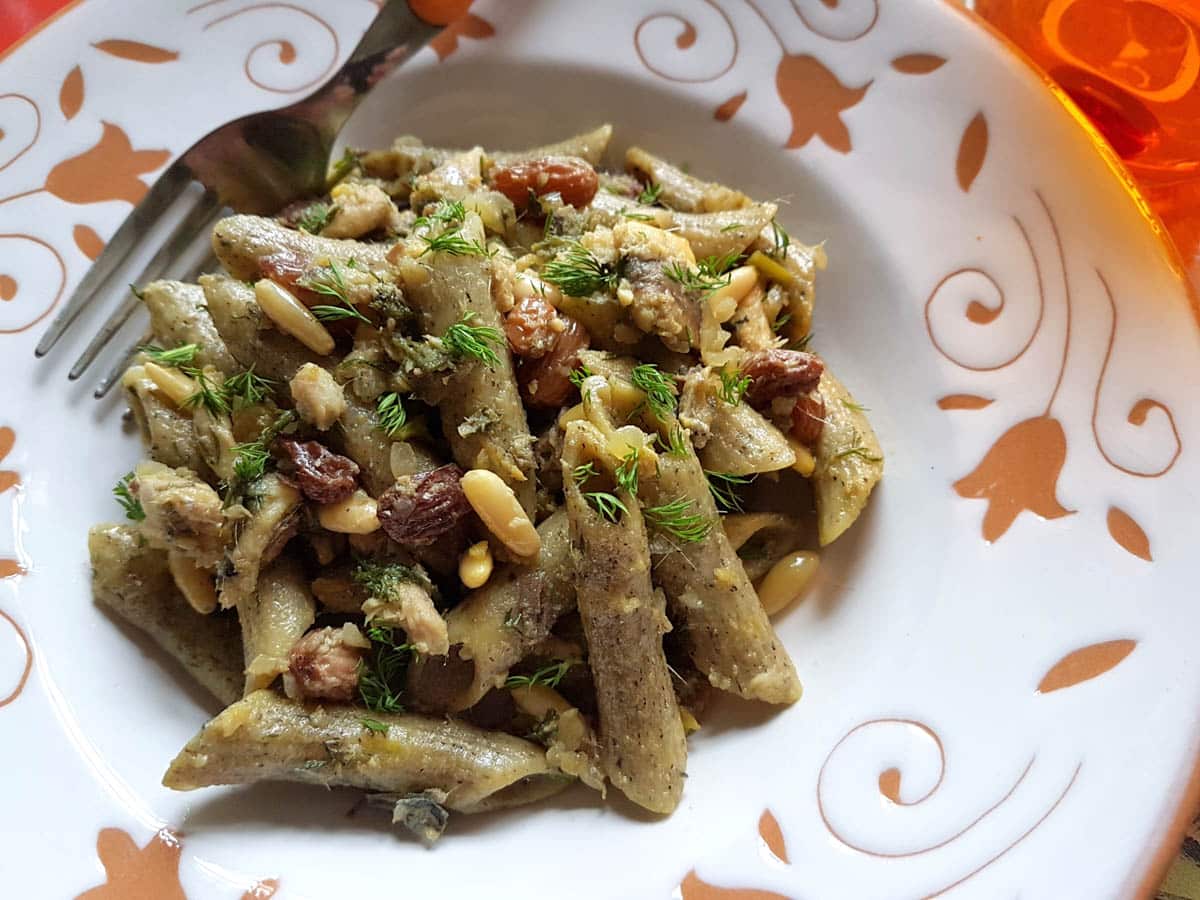
Other Traditional Pasta Recipes from Sicily
If you do try this Sicilian pasta with sardines recipe, I’d love to hear what you think. Please write a comment here on the blog or post a comment on the Pasta Project Facebook page.
Your feedback means a lot to me!
Buon Appetito!
Pin for Later:
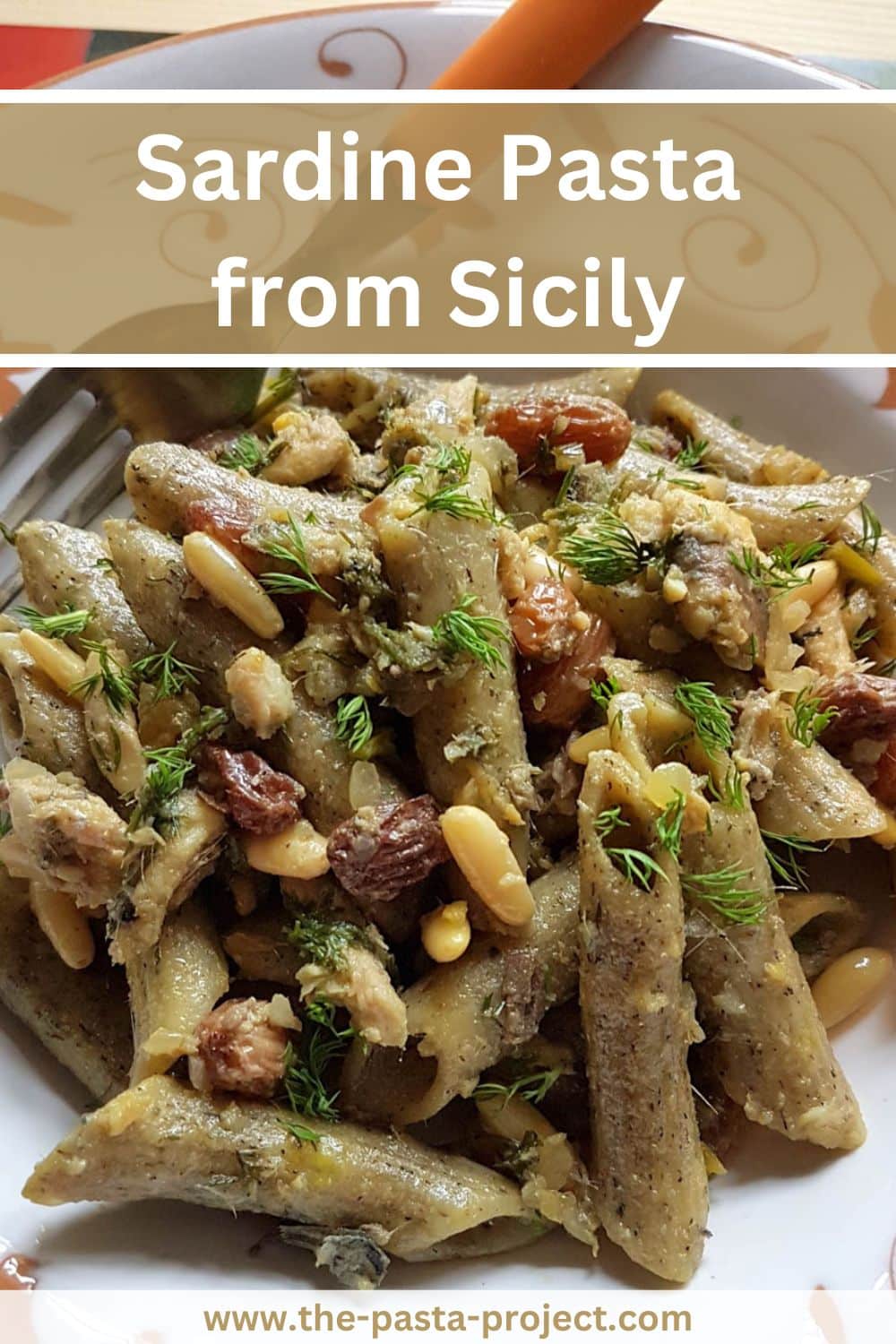
If you are interested in learning how to make homemade pasta and different types of gnocchi, check out my shop page for some great video online courses from my friends in Rome! Nothing beats learning to make pasta from Italians! Plus while you’re there why not order a copy of my autumn/winter pasta recipes cookbook!?
More Seafood & Lake Fish Pasta Recipes
Reader Interactions
Trackbacks


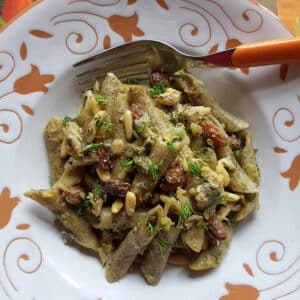
[…] 1. Pasta con le Sarde (Pasta with Sardines) […]